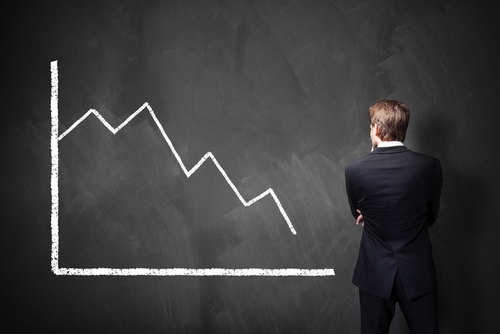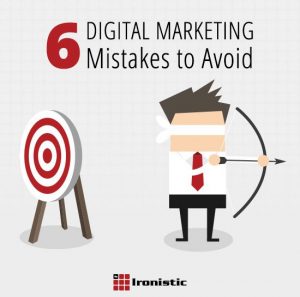— June 1, 2018
It is only natural for organic website traffic to ebb and flow, but it’s highly unnatural for it to experience a dramatic or ongoing decline. Whether your organic traffic has been on a slow and steady downward slope or has taken a rapid nosedive, your job is twofold. You first need to figure out what’s going wrong. And then you need to fix it.

Any number of reasons can be behind your organic website traffic dip, with some of the most common noted below.
Google Algorithm Change
Google search algorithms constantly change to align with the way people search and browse the internet. When algorithms change, the bots change how they crawl the web and what they look for. Take the changes as a cue that it may be time to refresh your content and keyword targets to ensure you’re focusing on and delivering content users are actually searching for.
Problem with Technical SEO
While content is a huge part of your inbound strategy, another important part is the technical aspects of your SEO. Technical aspects include factors such as:
- Page loading speeds
- Mobile responsive design
- Multiple pages that have the same topics, keywords and themes, which can make it tough for search engines to determine which page to prioritize
- The pages your robots.txt file blocks or allows search engine bots to crawl
- Inadvertently placing NoIndex/NoFollow tags on updated or new pages
Penalized by Google
Manual or algorithmic penalties can cause a big dip in traffic. Sites that don’t comply with Google Webmaster quality guidelines are flagged and receive manual penalties if the issues remain unresolved. Check for manual penalties in your Google Search Console account.
Algorithmic penalties aren’t specifically reported, but they include things like weak content or harmful backlinks.
Content Quality
Poor-quality content can cause a drop in organic traffic, particularly if you’ve decreased the amount or type of content you produce. A content audit of your site can help you determine if poor content is contributing to your traffic dip. Replace weak content with stronger content that adds value to your site.
Tracking Code Issue
Tracking code issues can occur when the Google Analytics tracking code isn’t properly collecting data. Things can go wrong when:
- The GA tracking code doesn’t appear on every page of your site
- The GA code snippet you’re using is incorrect
- The snippet has whitespace or extra characters due to code formatting being lost during cutting and pasting the code onto your site
Additional Tips to Determine Drop
If you’re still having trouble figuring out the cause behind your organic website traffic drop, a number of additional tips may help.
Pinpoint Specific Drops
Even though it may appear that your entire site is experiencing a traffic dip, you may be able to trace the drop to several particular pages or keyword terms. You can also narrow down the drop even further by reviewing different time periods to see when the dip began.
Look at Your Competition
Changes in your competition can impact your traffic, especially in industries prone to sudden and dramatic change. Review your inbound marketing reporting to see if any of your keywords decreased in rank. This could indicate a competitor is outpacing you, or that an overall decline in your site has given your competition room to move in.
Analyze Your Link Profile
Inbound links play a role in how high you rank in search engine results, which can likewise impact your organic website traffic. Review the quality and quantity of your inbound links, looking for new links from dubious sites or sources. Get them removed by asking the site’s webmaster or, if that fails, getting the link disavowed by Google.
How to Improve Organic Website Traffic
A few strategies can help you get your organic traffic back on the upward track.
Treat SEO as Long-Term Investment
View SEO as an ongoing practice that requires adequate time and attention for best results. Keep your SEO investment strong with valuable content, proper technical SEO practices and continuously enhancing your site’s user experience. A site with a firm SEO foundation is less likely to be significantly affected by changes in algorithms or your industry.
Make Corrections and Improvements
Correcting any issues you find can go a long way toward repairing your organic traffic dip, as can embarking on best practices to improve your overall site. Corrections can include things like removing bad links, strengthening content, and fixing technical SEO. Be patient, as it may take some time for Google’s search index to reflect your changes.
Once you’re able to discover the causes behind your organic traffic dip, fix any issues, and fortify your overall site, you should be in good shape. You can again enjoy a steady stream of organic traffic that’s backed by practices to further help it grow.
Digital & Social Articles on Business 2 Community
(82)
Report Post








